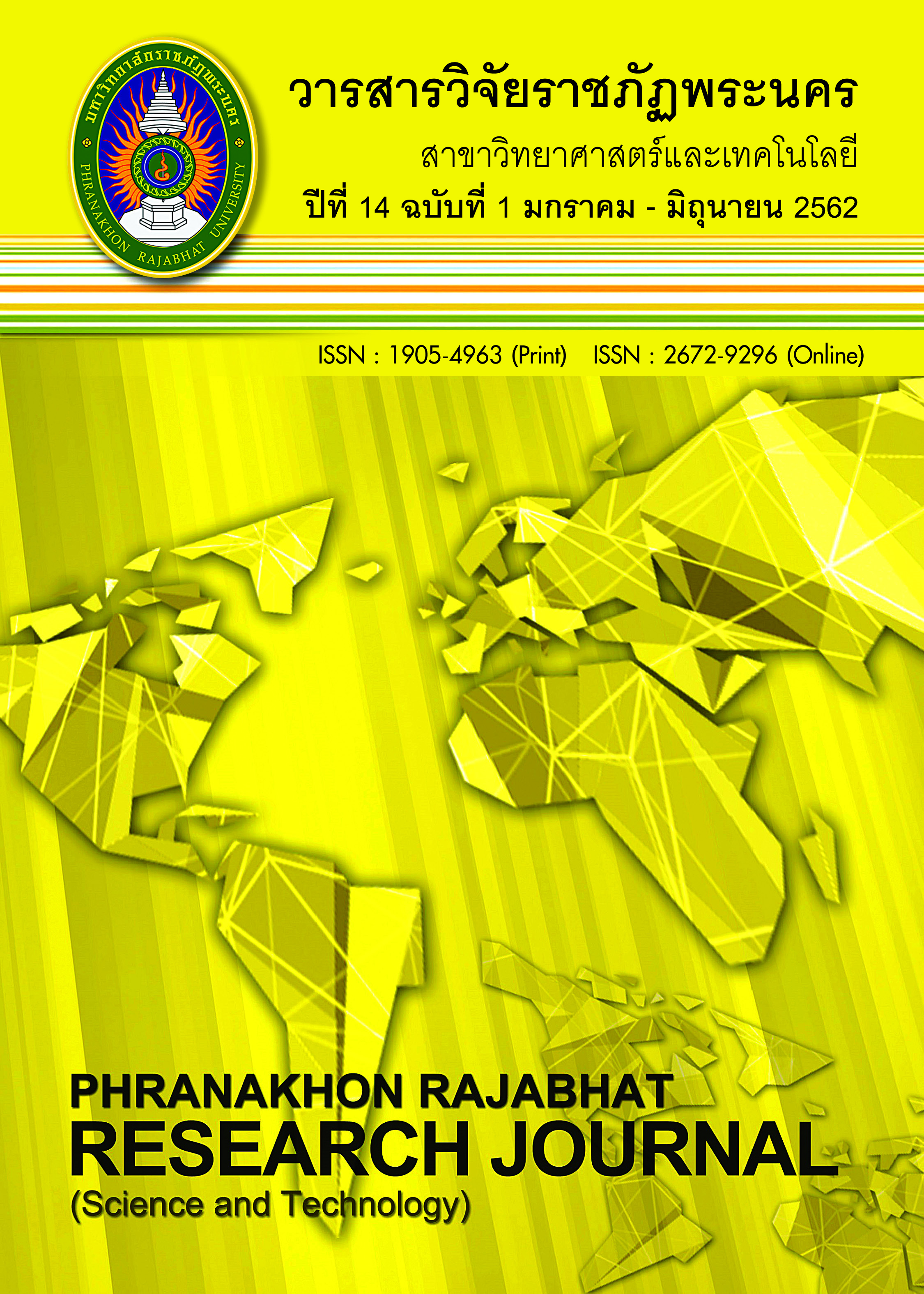APPLICATION OF SURFACE-ENHANCED RAMAN SCATTERING BASED ON COLLOIDAL SILVER NANOPARTICLES FOR PEN INKS CLASSIFICATION IN FORENSIC DOCUMENT EXAMINATION
Keywords:
Inks analysis, Silver nanoparticles, Surface-Enhance Raman Scattering, Forensic science, Raman spectroscopyAbstract
Questioned documents are documents from suspicious source or authenticity, that may involve not only in forgery cases but also in homicides, burglaries, robberies and other crimes. In 2015, the Court of Justice in Thailand reported that 95% of counterfeited offences were document cases, especially written document, that trend to increase in number of cases every year. Therefore, an alternative scientific method to characterize ballpoint pen ink on written document employing colloidal surface-enhanced Raman scattering (SERS) effect was developed in this work. The colloidal silver nanoparticles (AgNPs) were synthesized using green method and effects of several parameters on colloidal formation and SERS effectiveness were investigated. The results showed that the AgNPs with an average diameter of 37 ± 1 nm can be used as SERS material for in situ analysis of ballpoint pen inks on document. The strongest Raman fingerprints of pen inks were achieved by characterization using Raman spectrometer with a laser wavelength of 532 nm. The results showed that reported AgNPs colloid could be a powerful SERS nano-amplifier for water-gel based inks analysis. Furthermore, it is a convenient, rapid, and non-destructive method for forensic analysis of written pens on questioned document.
References
Andrasko, J. (2001). HPLC analysis of ballpoint pen inks stored at different light conditions. Journal of Forensic Science. 46(1), pp. 21–30.
Braz, A., López-López, M. & García-Ruiz, C. (2013). Raman spectroscopy for forensic analysis of inks in questioned documents. Forensic Science International. 232(1-3), pp. 206-212.
Chamsuwanwong, A. (2009). Forensic science 2 for crime investigation. Bangkok: G.B.P Center. (in Thai)
Djozan, D., Baheri, T., Karimian, G. & Shahidi, M. (2008). Forensic discrimination of blue ballpoint pen inks based on thin layer chromatography and image analysis. Forensic Science International. 179(2-3), pp. 199-205.
Du, J., Xu, J., Sun, Z. & Jing, C. (2016). Au nanoparticles grafted on Fe3O4 as effective SERS substrates for label-free detection of the 16 EPA priority polycyclic aromatic hydrocarbons. Analytica Chimica Acta. 915, pp.81-89.
Geiman, I., Leona, M. & Lombardi, J.R. (2009). Application of Raman spectroscopy and surface-enhanced Raman scattering to the analysis of synthetic dyes found in ballpoint pen inks. Journal of Forensic Science. 54(4), pp.947-952
Ho, Y.C., Lee, W.W.Y. & Bell, S.E.J. (2016). Swellable SERS-active polymer films for the forensic examination of blue gel inks and their constituent dyes. The Royal Society of Chemistry.
Lázaro, J.C., Lima, C.J.d., Moreira, L.M., Silveira, Jr.L., Silveira, N.J.F.d., Villaverde, A.B. & Pacheco, T.T. (2008). Analysis of the alteration in the optical configuration of Raman spectrometer: optimization of signal-to-noise ratio(SNR) in a specific wavelength range of clinical interest. Spectroscopy. 22(6), pp. 467-474.
Li, C.J. & Trost, B.M. (2008). Green chemistry for chemical synthesis. Proceedings of the National Academy of Sciences of the United States of America. 105(36), pp. 13197-13202.
Moskovits, M. (2005). Surface-enhanced Raman spectroscopy: a brief retrospective. Journal of Raman Spectroscopy. 36(6-7), pp. 485-496.
Nuntawong, N., Eiamchai, P., Somrang, W., Denchitcharoen, S., Limwichean, S., Hormprathum, M., Patthanasettakul, V., Chaiya, S., Leelapojanaporn, A., Saiseng, S., Pongsethasant, P. & Chindaudom, P. (2016). Detection of methamphetamine/ amphetamine in human urine based on surface-enhanced Raman spectroscopy and acidulation treatments. Sensor and Actuator B. 239. pp. 139-146.
Office of Planning and Budget, Courts of Justice (2015). Annual judicial statistics of Thailand report 2015. Retrieved March 15, 2017, from http://www.coj.go.th/home/file/Annual_Tha_ 2558.pdf (in thai)
Otto, A., Mrozek, I., Grabhorn, H. & Akemann, W. (1992). Surface-enhanced Raman scattering. Journal Physics: Condensed Matter. 4(5), pp. 1143-1212.
Pfeiffer, C., Rehbock, C., Hühn, D., Carrion, C.C., Aberasturi, D., Merk, V., Barcikowski, S. & Parak, W.J. (2014). Interaction of colloidal nanoparticles with their local environment: the (ionic) nanoenvironment around nanoparticles is
different from bulk and determines the physico-chemical properties of the nanoparticles. Journal of the Royal Society Interface. 11(96), pp. 1-13.
Phetsahai, A., Thamaphat, K. & Nuntawong, N. (2016). Green synthesis of colloidal silver nanoparticles for surface-enhanced Raman scattering. Phranakhon Rajabhat Research Journal (Science and Technology). 11(1), 116-127.
(in thai)
Phorassamee, W. (2012). Analysis of black ballpoint pen inks using thin layer chromatography and image analysis. Degree Master of Science Program in Forensic Science, Program of Forensic Science, Graduate School, Silpakorn
University.
Raza, A. & Saha, B. (2013). Silver nanoparticles doped agarose disk: highly sensitive surface enhanced Raman scattering substrate for in situ analysis of ink dyes. Forensic Science International. 233(1-3), pp. 21-27.
Smith, E. & Dent, G. (2005). Modern Raman spectroscopy - a practical approach. West Sussex: John Wiley & Sons.
Wang, X.F., Yu, J., Xie, M.X., Yao, Y.T. & Han, J. (2008). Identification and dating of the fountain pen ink entries on documents by ion-pairing high-performance liquid chromatography. Forensic Science International. 180(1), pp. 43-49.
Zięba-Palus, J. & Kunicki, M. (2006). Application of the micro-FTIR spectroscopy, Raman spectroscopy and XRF method examination of inks. Forensic Science International. 158(2-3), pp. 164-172.
Downloads
Published
Issue
Section
License
โปรดกรอกเอกสารและลงนาม "หนังสือรับรองให้ตีพิมพ์บทความในวารสารวิจัยมหาวิทยาลัยราชภัฏพระนคร สาขาวิทยาศาสตร์และเทคโนโลยี" ก่อนการตีพิมพ์




